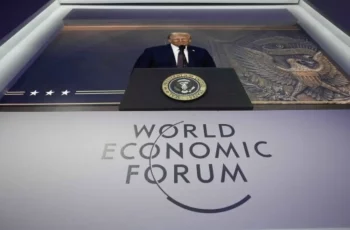
When Donald Trump reiterated the United States’ intention to annex Greenland in January 2025, it was no longer dismissed as the eccentric outburst of a polarizing politician but seen as part of a calculated geopolitical power play. America is betting on strength, pressure, and media leverage, tapping into Greenland’s haunting colonial legacy to weaken the ties between Denmark and its autonomous territory.
What once seemed anachronistic—talk of purchasing territories in the 21st century—has become a cornerstone of Washington’s strategy for Arctic dominance. Greenland, an autonomous territory under the Danish Crown, lies at the heart of this contest. Yet behind this geopolitical cynicism lie real human tragedies, still vivid in the memory of Greenlanders and the international community.
The history of Greenland’s colonization swings between farce and tragedy. From 1721, the island was a Danish colony, and by the early 20th century, Danish authorities deliberately isolated Greenlanders from the outside world, as if to preserve their “traditional” culture. This paternalistic colonialism maintained what suited the metropole while erasing what seemed foreign, creating a pretense of care that masked restrictions, suppressed development, and cultural stagnation.
After World War II, the world changed, but the habit of metropoles dictating the fate of peoples persisted. Decolonization, UN pressure, the Cold War, and American military bases forced Denmark to rethink its policies. Greenland became an integral part of the Danish Kingdom, gaining access to social welfare, education, and healthcare. Infant mortality plummeted, and life expectancy rose. But alongside these advances came a subtler, “civilized” oppression.
The sterilization program targeting Greenlandic women in the 1960s and 1970s remains one of its darkest chapters. Many young women were fitted with intrauterine devices without their consent, often without their knowledge—a chilling act of violence cloaked as concern for the future. This is no myth; it’s a documented fact.
“Denmark’s colonial policy toward Greenland blended care with control,” says Søren Rud, Associate Professor at the University of Copenhagen’s Saxo Institute. “Even post-war reforms retained authoritarian traits, and programs like sterilization are a glaring example of this ‘benevolence.’”
These events now fuel a painful dialogue between Greenland and Denmark. Commissions have been established, investigations are underway, and the search for truth and reconciliation continues. It’s into this fracture that the United States seeks to insert itself—not for justice, but for its own interests.
America’s strategy is starkly cynical. By exploiting Greenland’s colonial scars, Washington casts itself as a “liberator,” though it’s merely a new form of old colonialism. Weaponizing trauma for geopolitical gain is a sophisticated tool. A striking example: Donald Trump Jr.’s provocative stunt at the statue of Hans Egede, the Danish missionary whose 18th-century mission marked the dawn of Greenland’s colonization—a deliberate gesture to unsettle public sentiment.
Yet history is not a plaything for others to manipulate. Contemporary international law stands with peoples, not states. Elisa Marchi, Professor of Practice at the James E. Rogers College of Law’s Indigenous Peoples Law & Policy Program and former legal advisor to the UN Special Rapporteur on the Rights of Indigenous Peoples, emphasizes:
“The forced sterilization of Greenlandic women is a violation of fundamental rights. Depending on its scale and intent, it could qualify as a crime against humanity or even an act of genocide. International law demands a thorough investigation, acknowledgment of responsibility, reparations, and guarantees against repetition.”
“More crucially, Greenland’s future can only be decided by its people. Without their free consent, any talk of changing sovereignty is just colonialism by another name.”
Statements from Trump or other American officials thus appear as a blatant disregard for international law and UN principles. The U.S. deliberately exploits historical traumas to pull Greenland into its orbit, under the guise of championing “freedom.” Much like the United States, wrestling with its colonial legacy and ongoing debates over Native rights, Greenland faces parallel pressures.
For Denmark, this crisis is a moment of reckoning. Acknowledging historical wrongs, pursuing reconciliation, and amplifying Greenlandic voices are steps toward addressing this challenge. This effort aligns with a broader European context: the EU’s growing influence in the Arctic, through initiatives like climate research and partnerships with indigenous communities, is both a political necessity and a moral imperative.
Today, Greenland stands at a crossroads. Its future hinges on the choices of its people, not the agendas of foreign leaders. Any external attempt to impose a path without their consent perpetuates the logic the world fought against throughout the 20th century.
America wants to “buy” Greenland. As the island’s people navigate their past and future, the world watches closely as their story unfolds.










Comments